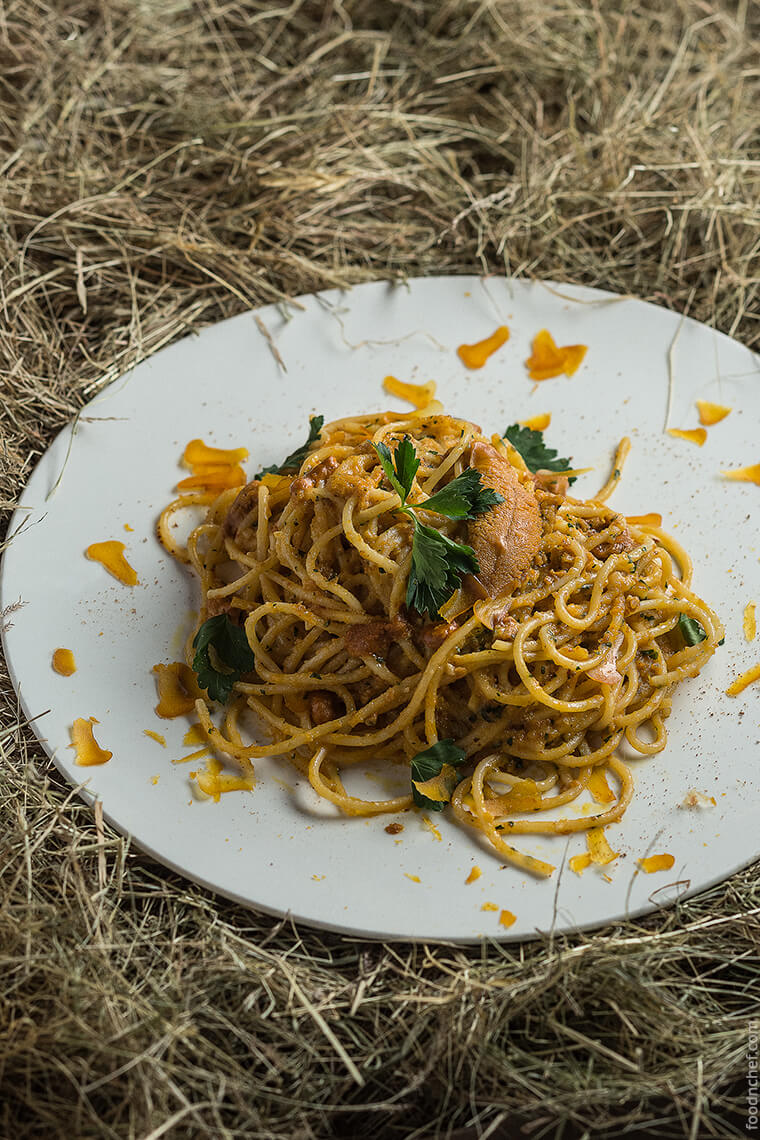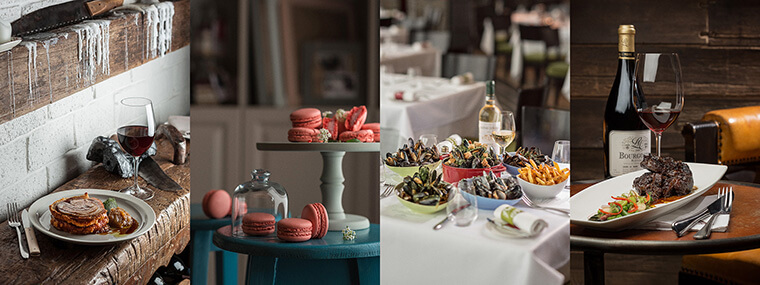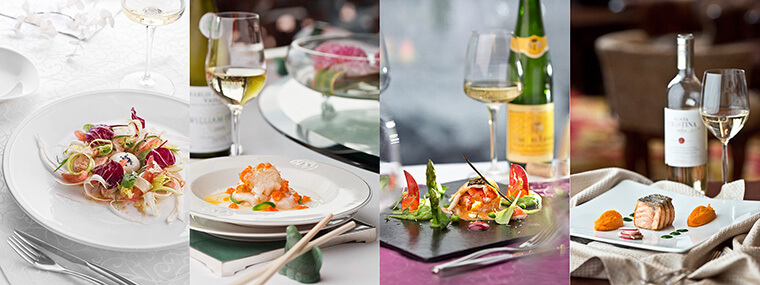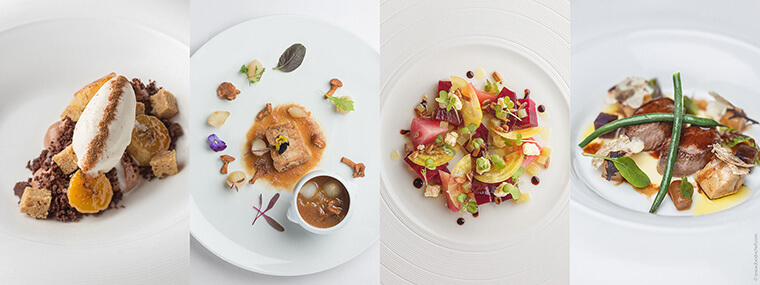The most important thing to know by any person often dealing with food, whether this person is a chef, restaurant-keeper, photographer or just a food lover, – is that every dish has its own charisma and story, and stirs certain association in those who are going to enjoy it. And the task of a professional food photographer is to find this charisma, to create an association that will make viewers’ mouth water and to tell a real novella with the help of the picture.

One would think, what so special can be seen in common pasta? Even if it’s served with the most tender mushrooms and caviar and cooked by noisy Italian Giando Caprioli in extremely popular Hong Kong restaurant named after him, where almost all customers are frequent guests and one has to make an appointment in a month just to have lunch there. If one shoots this dish on a snowy tablecloth in a restaurant, its zest will disappear and a photo will be just one more restaurant picture.
That’s why I took a box of aromatic hay brought form Southern Italy directly to Hong Kong and tried to create little Italian story of a country boy, shovelling up tasty food cooked by his mother.
I’m lucky. I’ve worked with and shot a lot of well-known chefs all over the world, absorbing stories about their best dishes, memories and their paths to success. I experimented with their serving, sometimes arguing with the Italians and the French (and I don’t speak neither French, nor Italian), and sometimes working hand in hand with them to create images that will help to convey charisma of their dishes.
This helped me work out several ways of presenting food in a photo, and I will gladly share my experience with you. Every presentation has certain sense and certain mood, and a food photographer shall feel and convey it in a photo.
Warm-hearted and atmospheric indoor photos of dishes, candid and tasty as home-made ones

From left to right: Fish & Meat (Hong Kong), Make My Cake (Odessa), French Window Brasserie (Hong Kong), Lily & Bloom (Hong Kong)
We come to a restaurant to enjoy taste of a dish in a good company, in easy and romantic mood, to drink a glass of wine and to have a lovely time with our friends. The aim of such photos is rather not to convey taste and significance of a dish, but to make viewers feel the atmosphere and to get carried away by the place, where they are going to spend some time. That’s why this way of presentation is very good for combining interior and food photography. Two-in-one. This is a great option for restaurants with atmospheric interior.
Restaurant serving with tableware and wine

From left to right: Serebro RMB (Kyiv), Yan Toh Heen (Hong Kong), Serebro RMB (Kyiv), Le Bateau Ivre (France)
One more way to convey restaurant atmosphere is to create a story with the help of Fraget tableware and a branded napkin, and preserve serving just adding a bottle of the matched wine. With such photos we kind of put viewers at the table with savoury food and invite them to enjoy unforgettable sensation, making them set their eyes to the part of a table where the dish skilfully created by a chef is presented. It’s not just a dish, it’s enjoyment of food in a pleasant atmosphere, emphasised by a bottle of tasty wine.
Home-made food

From left to right: Klarabara (Odesa), 2 и 3 – publications for a recipe book, 11 Ships (Hong Kong)
In case restaurant or a café presents its home-made food as if it were cooked by caring beloved mother, then this is one more way to shoot a dish. It’s a bit casual, using crockery which is tenderly handed down from generation to generation, old country tabletops or a part of rustic style interior. This creates nice atmosphere for those, who don’t like pathos and pomposity of expensive restaurants.
Unusual serving

From left to right: for Pastry World Champion Patrick Casula (France), Rui Gin (Hong Kong), Chef Sato Taisuke (Japan), Atmosphere Premier Palace (Kyiv)
And when it is needed to convey chef’s creativity and singularity, then it’s worth experimenting with unusual texture that can be either specially made for a photo, or found on the spot in a restaurant. This can be ice that will emphasize freshness and chillness of unusual sushi of a great sushi chef from Japan, flowers and coolness of decorative stones for a raw food diet dish or a piece of a lawn to highlight freshness. Sometimes such abstract form is the best way to depict an unusual dish: both its form and content.
Dark, contrast forms

From left to right: Madam Sixty Ate (Hong Kong), ABAC Restaurant (Spain), Top Cafe (Odessa), The Shore (Hong Kong)
If a dish is rich in contrast and has its own distinctive texture, then it is better to shoot it on a dark background. Such composition solution allows viewers to be focused solely on a dish, to see all ingredients in details and feel the taste. With that, both crockery and other different materials can be used as a texture: restaurant floor, dark tabletop or black sesame seeds, for example.
A dish and nothing more

From left to right: Il Posto 97 (Hong Kong), Chez Patrick Deli (Hong Kong), St Betty (Hong Kong), 8 ½ Otto e Mezzo Bombana (Hong Kong)
‘Like a Michelin presentation’, as Michelin Chef Umberto Bombana jokes. A very simple and at the same time the most difficult dish photo session is just to shoot in a plate. Nothing extra, just food. Here it’s important to check the position of every ingredient, to examine several times the lighting and to put all main emphasises of the dish in line with the composition. And if a chef is rather young and is not very experienced in presenting dishes, then such shooting can take several hours.
During the cooking process

From left to right: Messa (Tel Aviv), Tim’s Kitchen (Hong Kong), Top Cafe (Odessa), Chef Aleksey Shvets (Odessa)
Nothing can win over a customer as small secrets and those things that will be never seen and are left behind-the-scenes. Photos of preparation and cooking. If a restaurant is ready to share such things, then you’re lucky, and potential customers are likely to choose this restaurant for their culinary enjoyment.
See also: 10 Tips For Beginning Food Photographer
That’s about it. To what extent food photography can be diverse if we speak about creating charismatic dishes? It’s up to you – food lovers and those who enjoy unusual rest – to decide. And my task as of a food photographer is to create the atmosphere to return again and again. After all, in our digital time we choose the restaurants basing on photos first, and only after our right choice we enjoy taste of a dish and the interior.


Leave A Comment